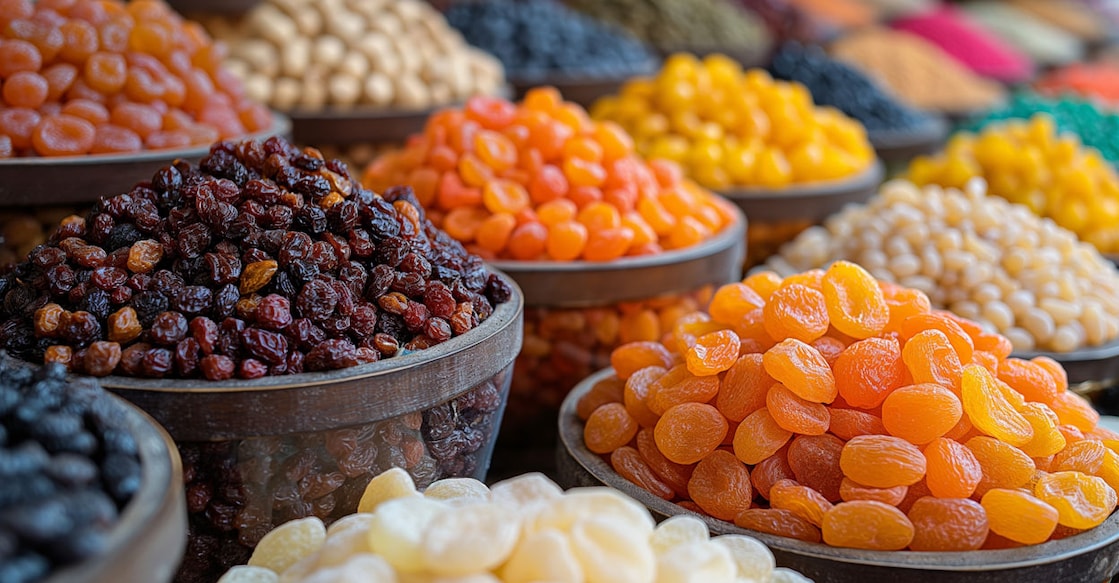Pesticides in raisins and other dried fruits: how to check, avoid, and get rid of them

Mail This Article
They sit quietly in your pantry—raisins, apricots, figs, and dates—tucked into trail mixes, lunchboxes, or simmering away in payasams and festive bakes. Dried fruits are often seen as wholesome and convenient, but there’s a hidden side we rarely think about: pesticide residue.
Just like fresh produce, many dried fruits come from conventionally farmed crops treated with pesticides. Unlike fresh fruits, however, these chemicals can linger even after drying, locking into the shrivelled skin and sticky flesh. Over time, consuming such residues in small amounts may pose health risks.
So how do you tell if your dried fruits are truly clean? And what can you do at home to make sure they’re safe to eat?
Here’s a guide to checking, avoiding, and removing pesticides from dried fruits—so you can snack with confidence.
Why do dried fruits have pesticides?
Fruits are commonly sprayed with pesticides during their growth to protect them from pests and diseases. These pesticides can remain on the fruit's surface even after drying, making it important to take steps to reduce exposure. Raisins, apricots, figs, and other dried fruits may contain pesticide residues from conventional farming methods. These chemicals can remain on the fruit even after processing and drying.
How to check for pesticides in dried fruits
1. Look for organic certification
One of the easiest ways to ensure that your dried fruits are free from pesticides is to look for organic certification. Organic dried fruits are grown without the use of synthetic pesticides or herbicides, offering a safer choice for those concerned about chemical exposure.
2. Purchase from trusted sources
Always buy dried fruits from reputable sources, particularly those that specialize in organic or pesticide-free products. This reduces the likelihood of purchasing fruits with high pesticide residues.
3. Use a pesticide testing kit
If you want to be more thorough, you can buy pesticide testing kits available in the market. These kits allow you to test the pesticide levels on dried fruits at home. While they might not be as comprehensive as laboratory tests, they can give you an idea of whether your fruits have pesticide residues.
4. Check for residue or coating
Sometimes, dried fruits are coated with a shiny layer to preserve their freshness and appearance. This coating can be a sign that pesticides or chemicals were used during processing. Check for any glossy appearance that may indicate the presence of chemical residues.
How to avoid pesticides in dried fruits
Go for organic options/homemmade goods: As mentioned earlier, organic dried fruits are a great way to avoid pesticides. Organic farming practices are strictly regulated and prohibit the use of synthetic pesticides, providing a safer alternative.
Rinse or soak the fruits: If you prefer to buy conventional dried fruits, one simple way to reduce pesticide exposure is by soaking them in water for a few hours or rinsing them thoroughly under running water. While drying might leave pesticide residues embedded inside the fruit, rinsing can help remove surface pesticides.
Choose fruits with a thick skin: fruits that have a thick skin, like figs, grapes (for raisins), and dates, tend to retain fewer pesticides as the skin acts as a barrier. However, even these fruits should be properly rinsed before consumption.
Buy from local farmers: if possible, buy dried fruits from local, small-scale farmers who may use fewer pesticides or practice sustainable farming methods. Many farmers use natural pest control and minimal chemical input.
How to remove pesticides from dried fruits
Even with precautions, it's still possible that pesticide residues remain on dried fruits. Fortunately, there are several ways to reduce or eliminate pesticides from the surface.
Soaking and rinsing:
- Fill a bowl with clean water.
- Add a tablespoon of baking soda to the water. Baking soda has been shown to effectively remove some pesticides.
- Soak the dried fruits in the water for 10 to 15 minutes.
- After soaking, gently scrub the fruits to remove any remaining residue.
- Rinse the dried fruits thoroughly under cold running water.
Using vinegar:
- In a bowl, mix a solution of one part white vinegar to three parts water.
- Soak the dried fruits in the solution for 10 minutes.
- Scrub the fruits gently, then rinse under cold water.
- Dry the fruits thoroughly with a clean towel.
Peel and dehydrate (for dried fruits like apricots and plums):
If the dried fruits are peelable (such as apricots or plums), removing the peel can significantly reduce pesticide exposure. After peeling, you can dehydrate the fruit at home using a dehydrator or an oven, ensuring you have full control over the drying process.
Rinse with saltwater:
Saltwater can help remove pesticide residues. Mix a tablespoon of salt in water, soak the dried fruits for a few minutes, and then rinse them under cold water. This method can also help reduce some of the pesticide residues on the fruit's surface.

